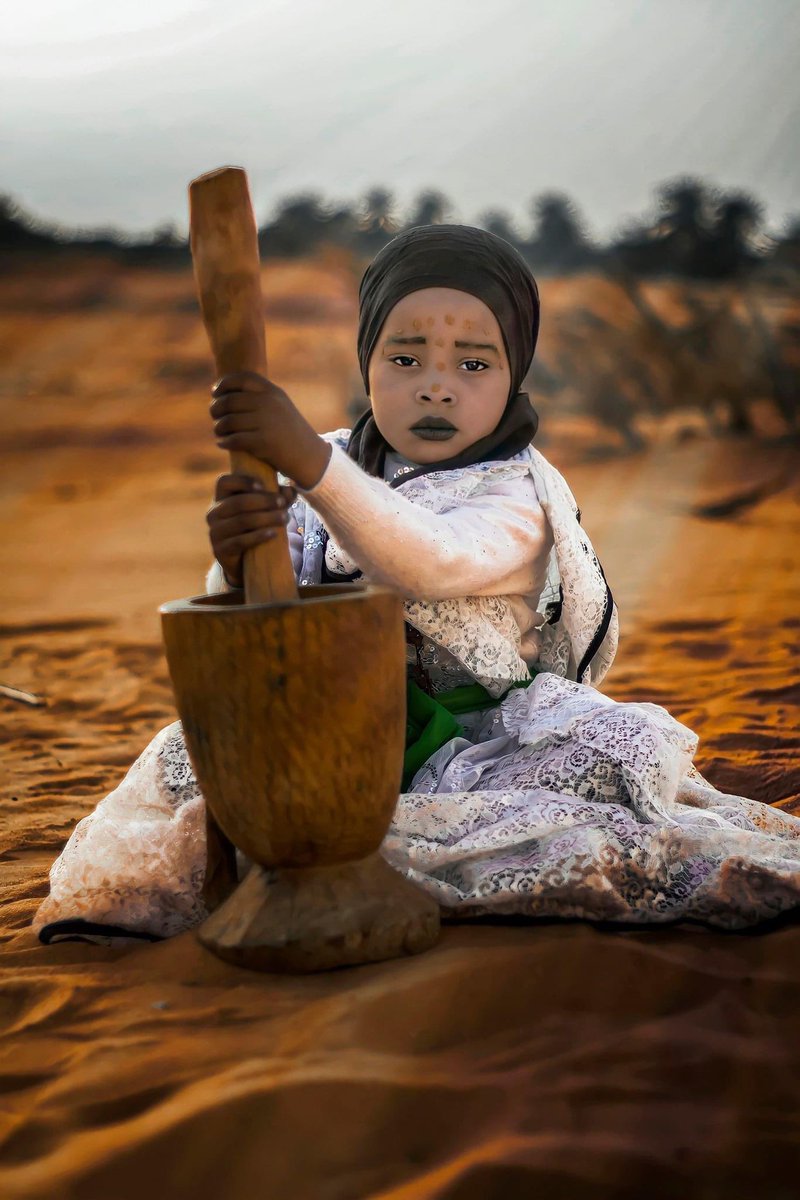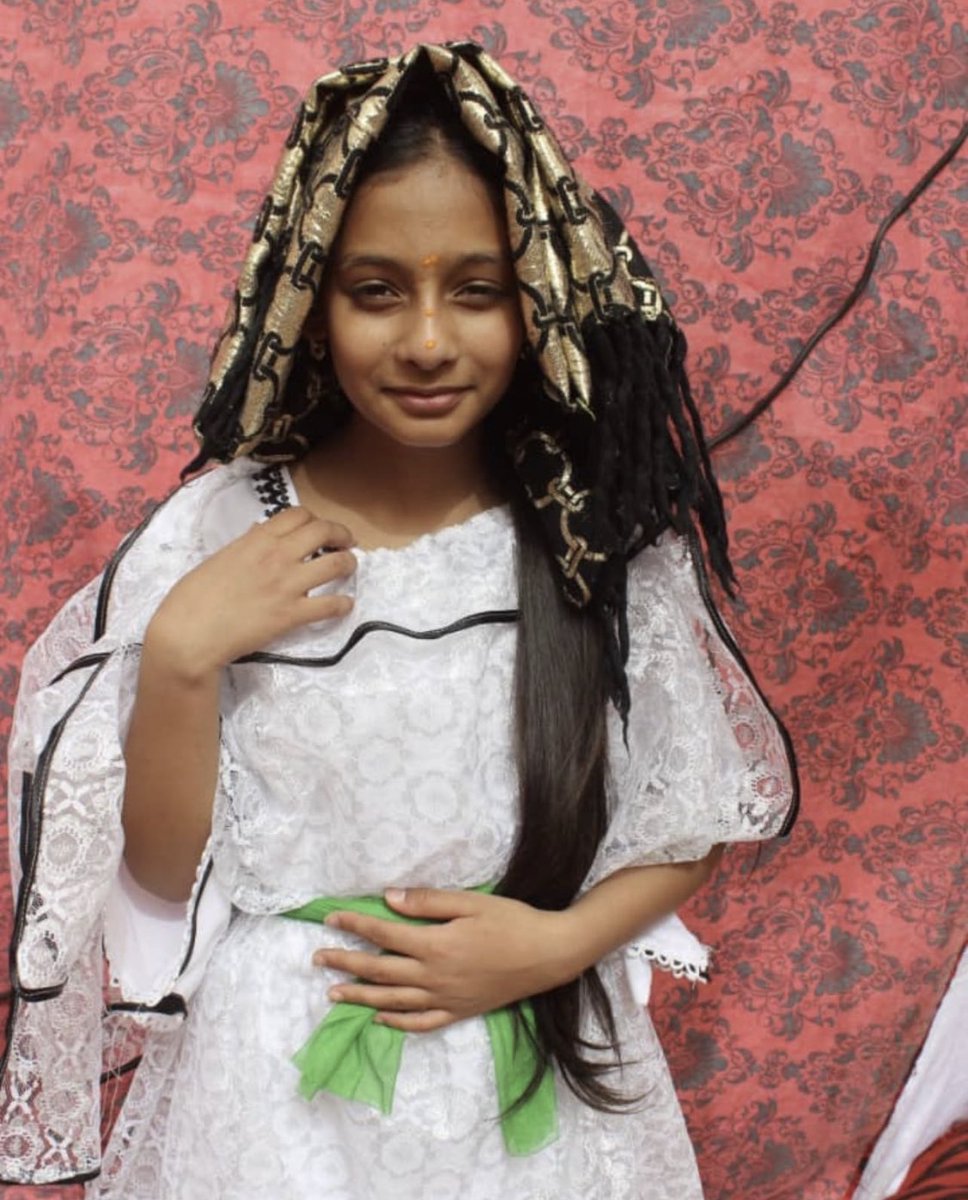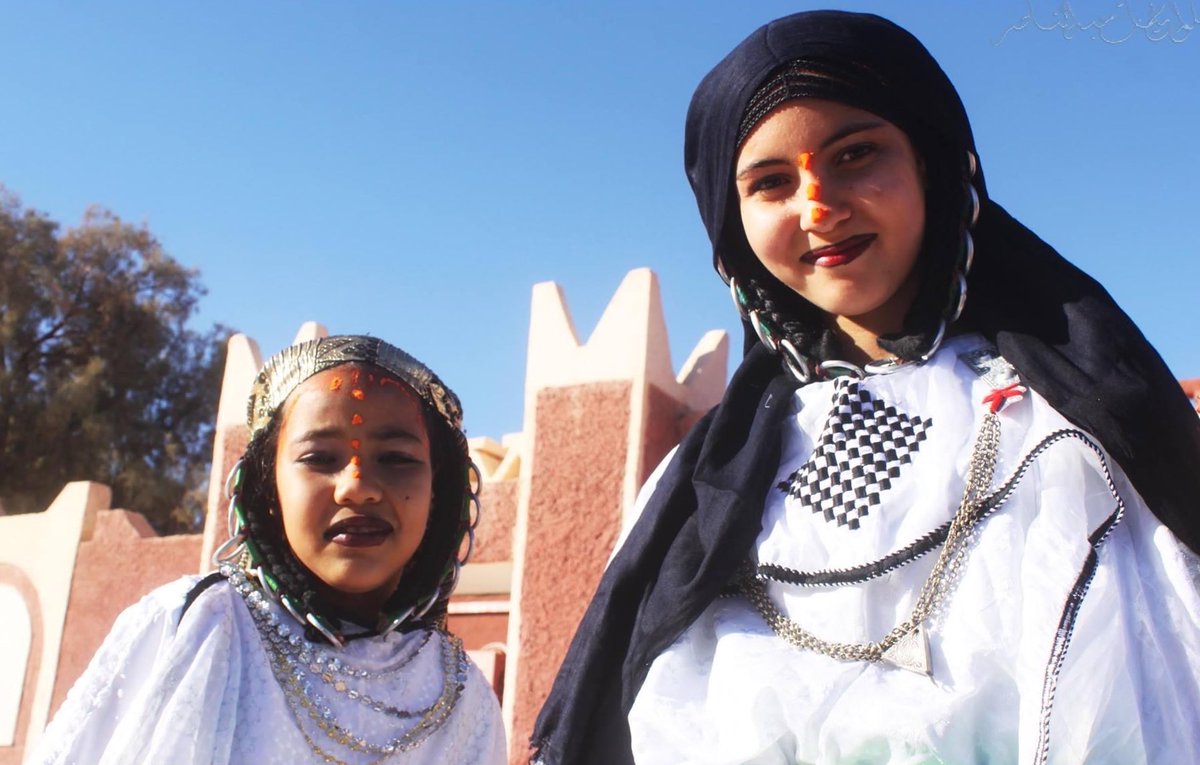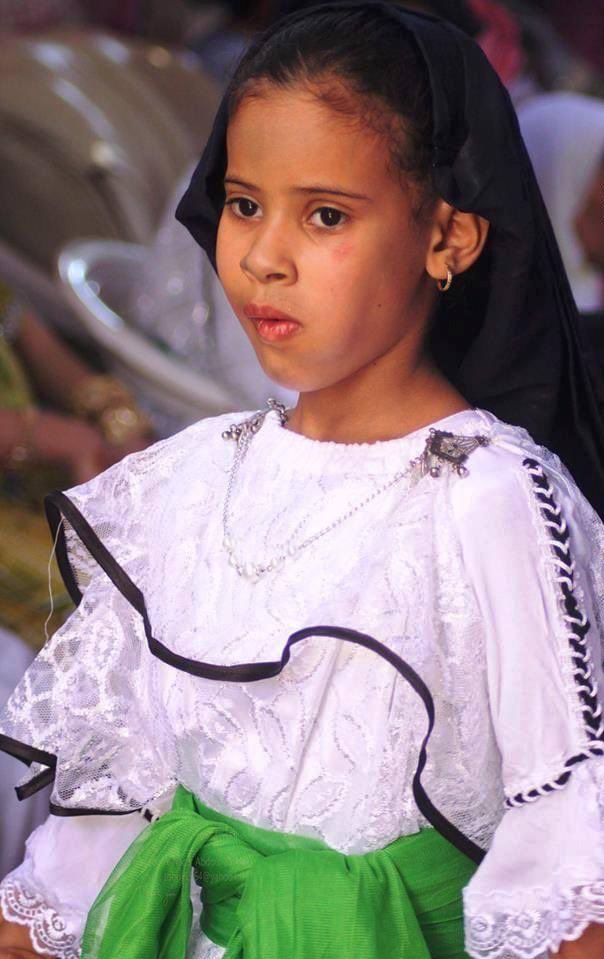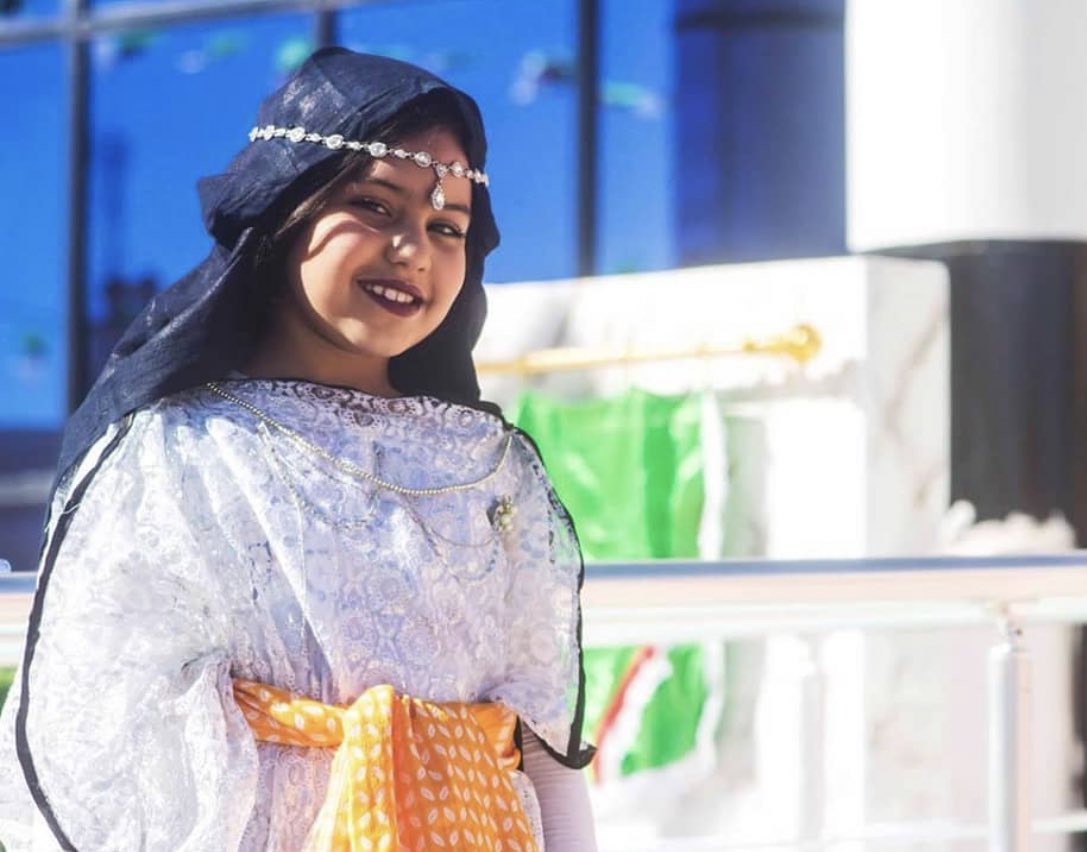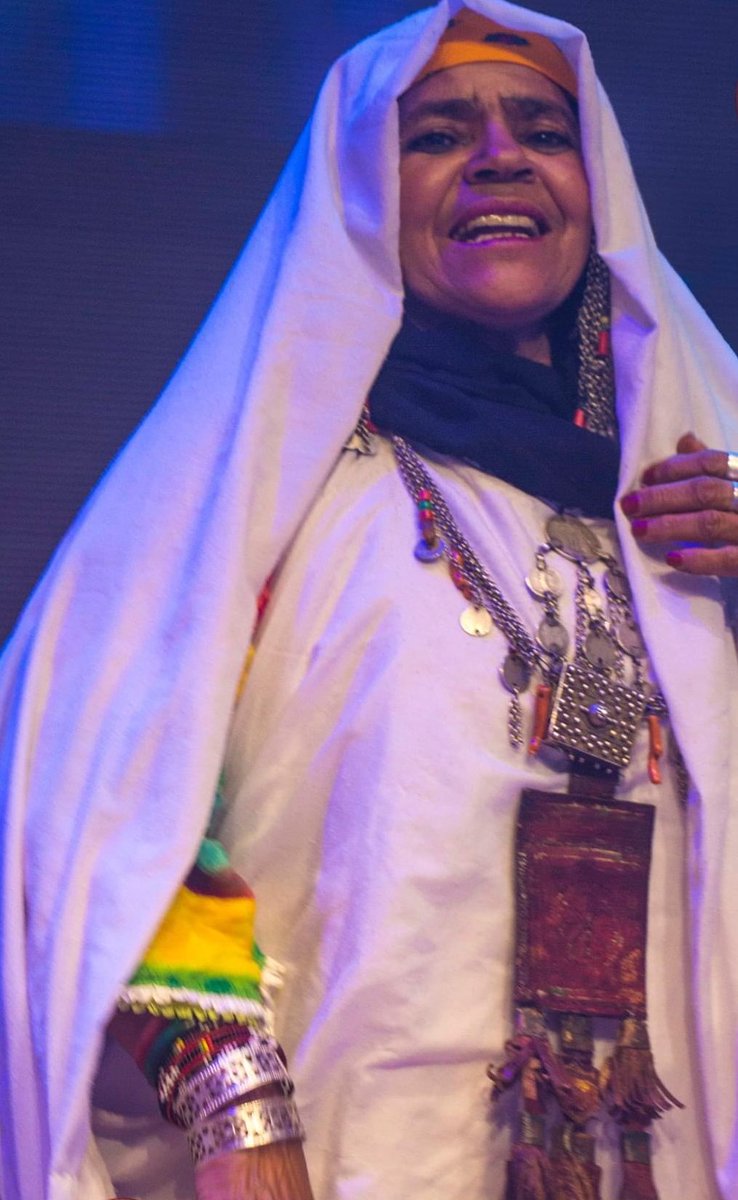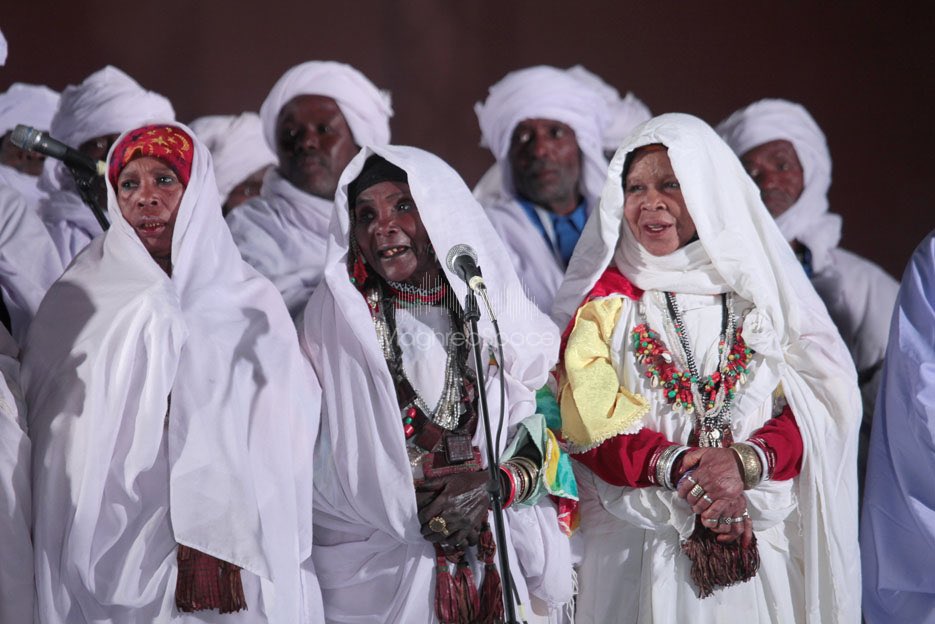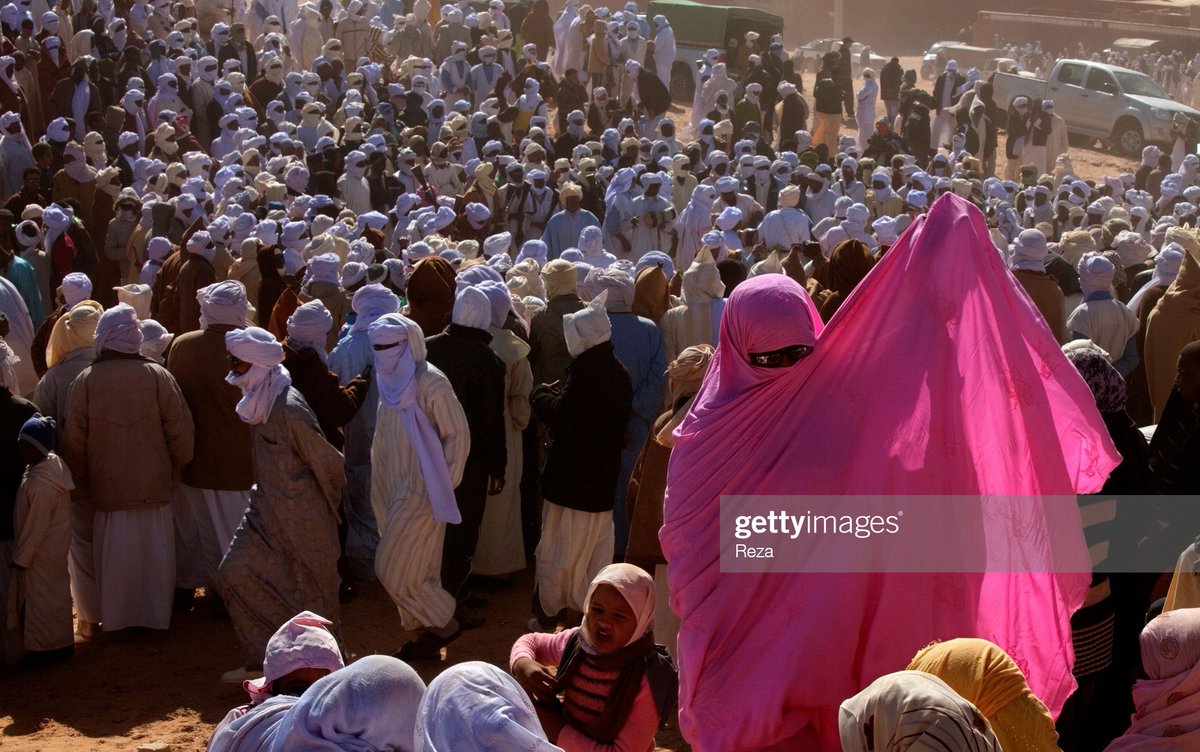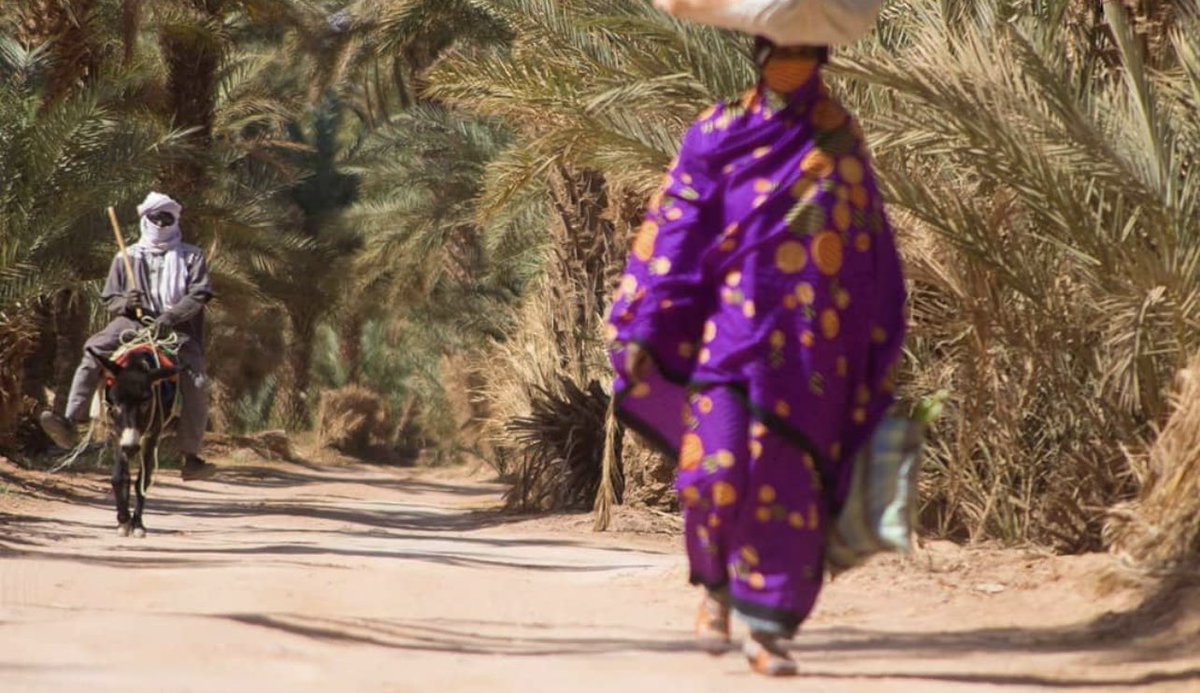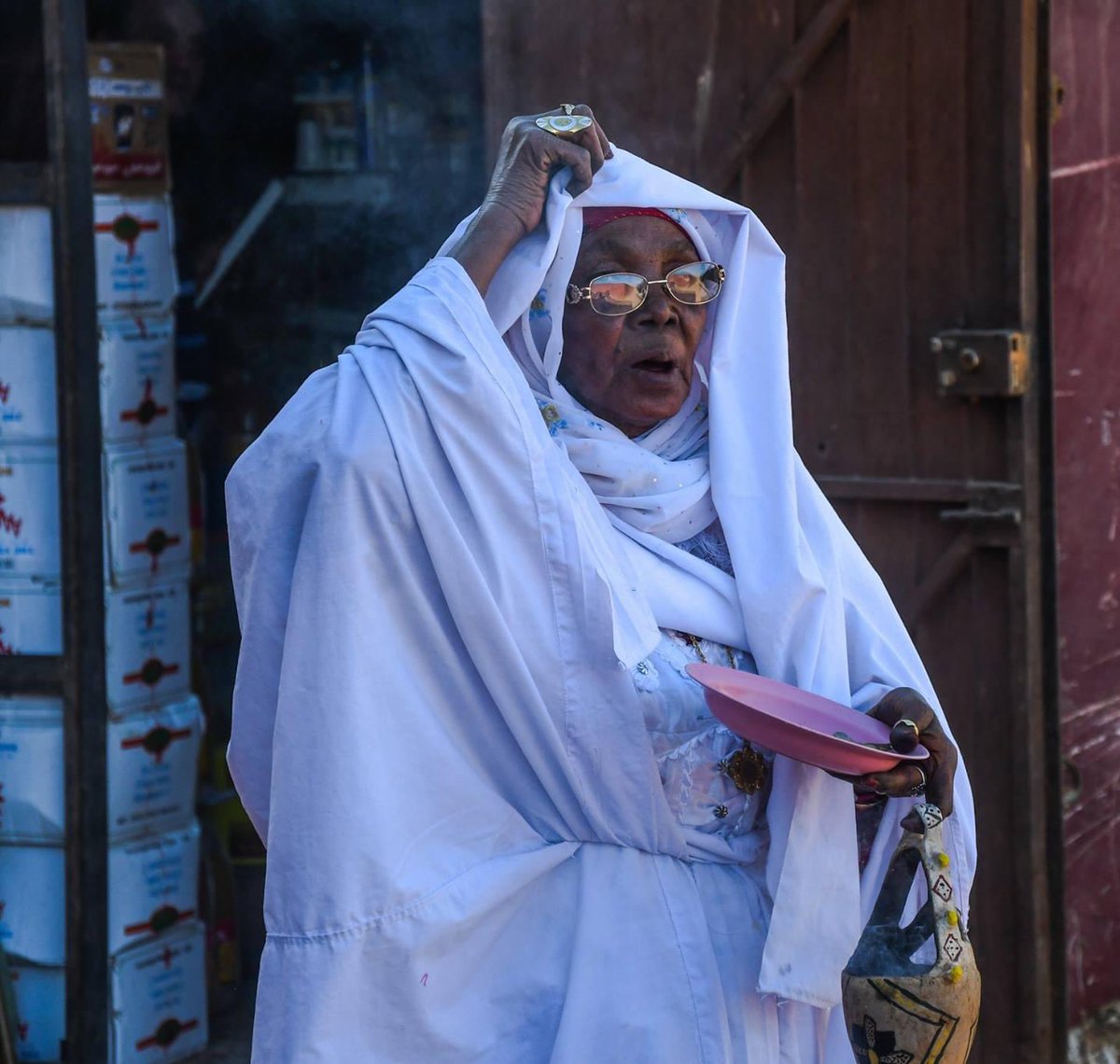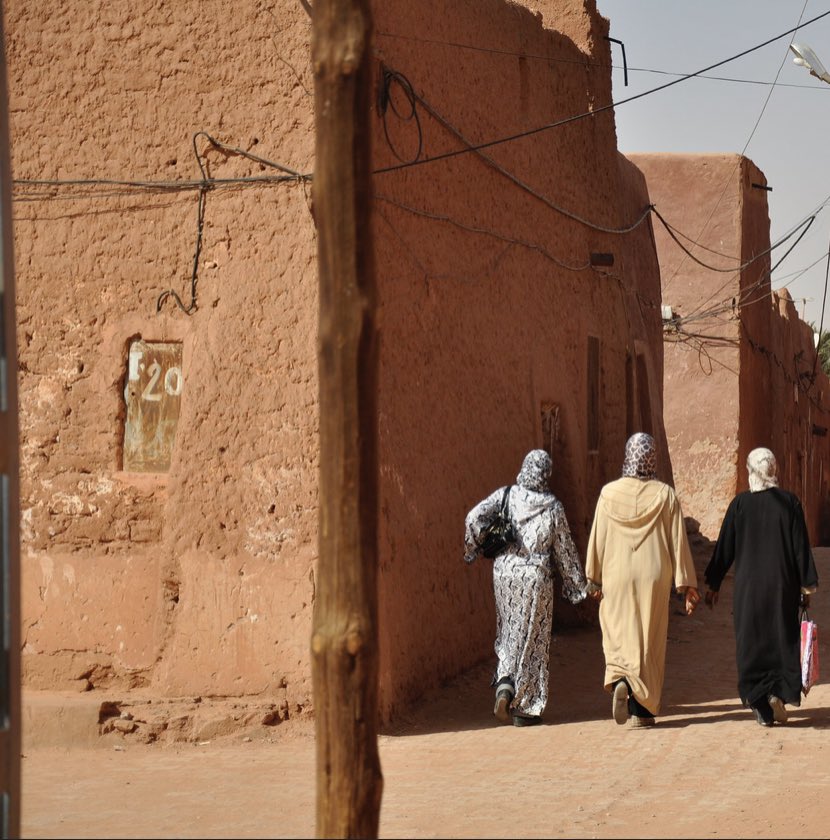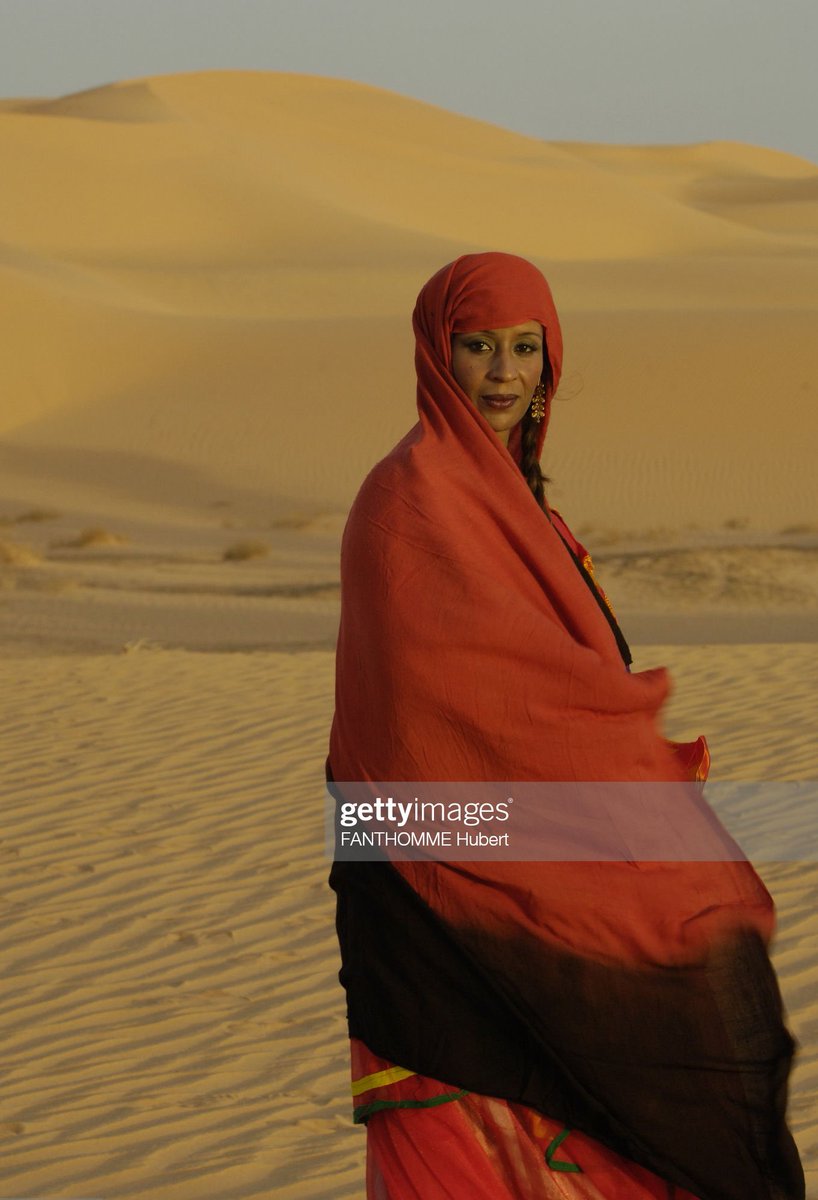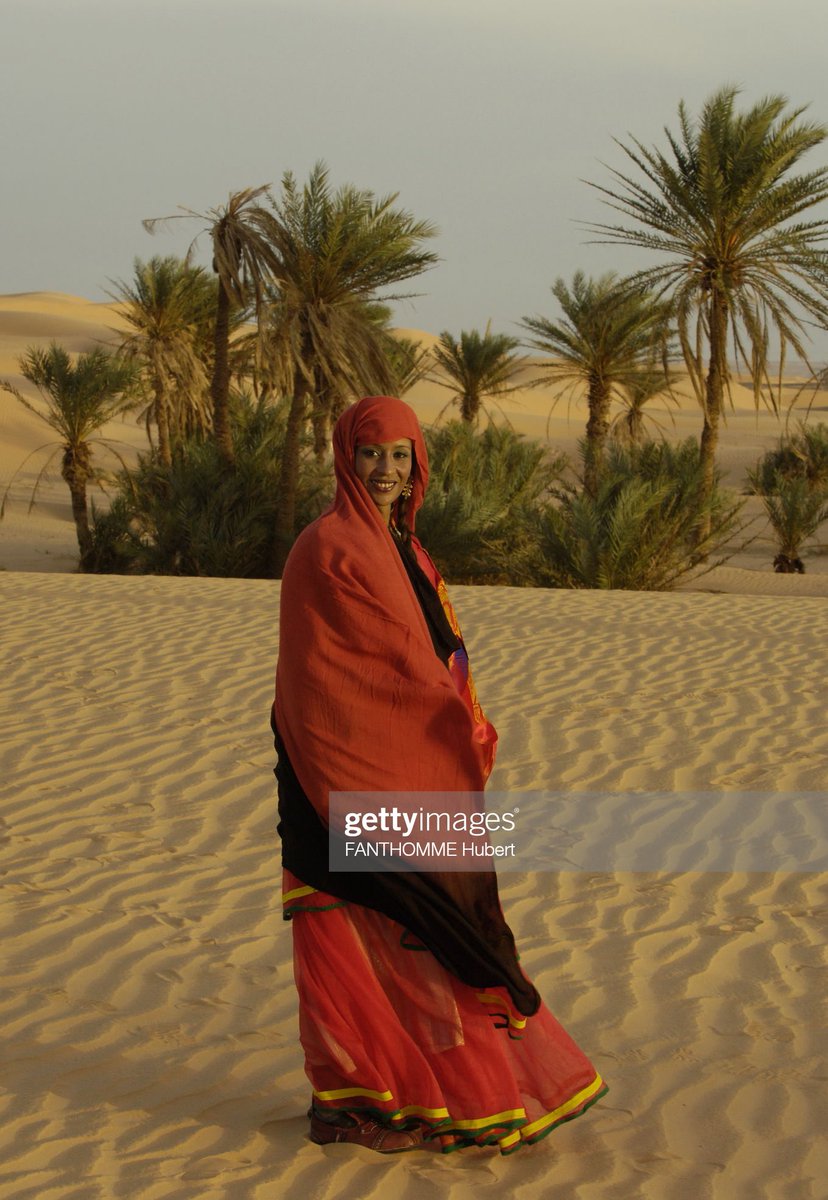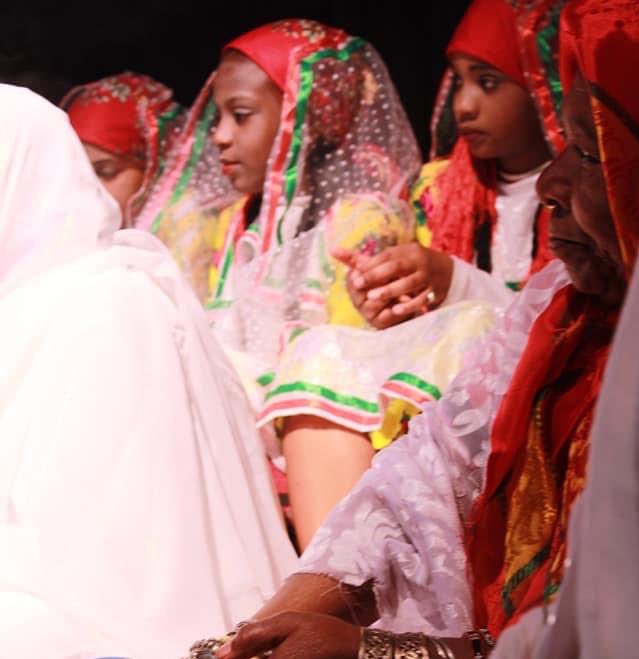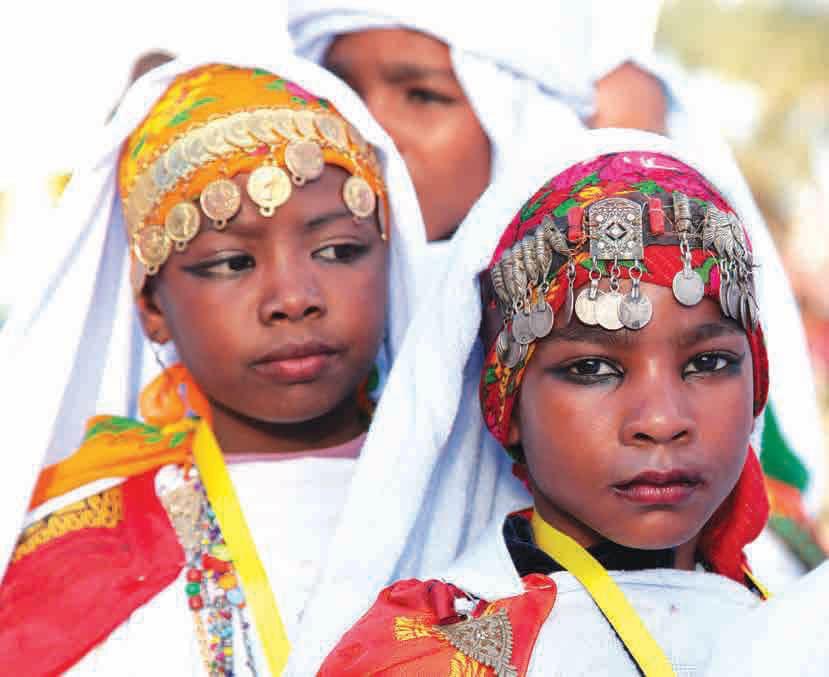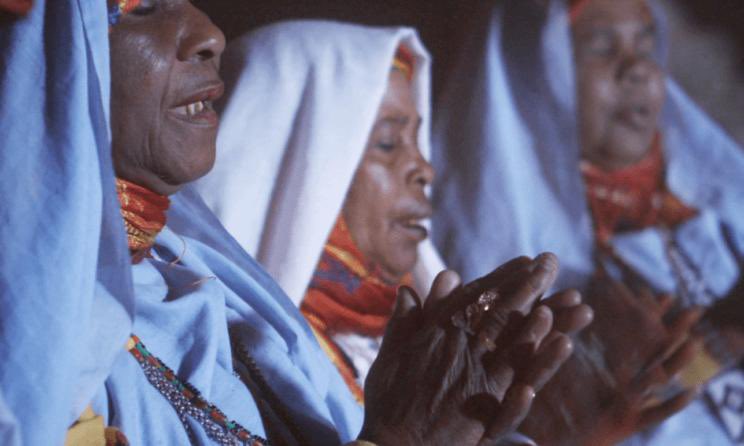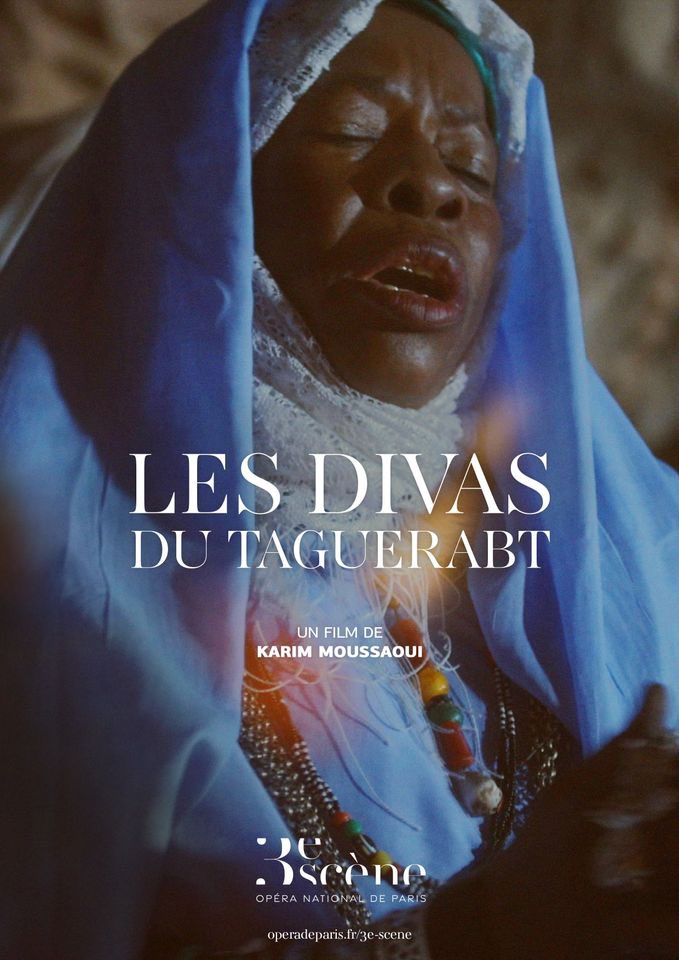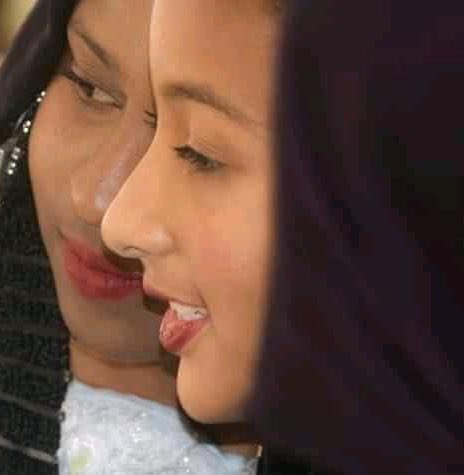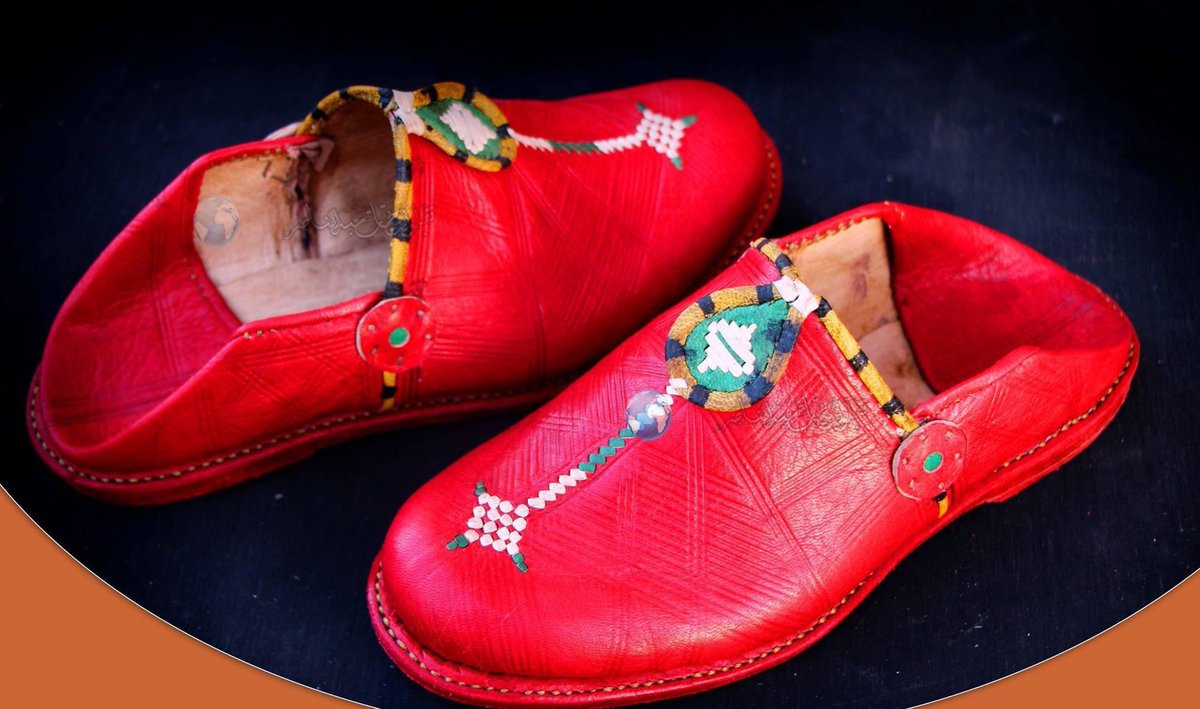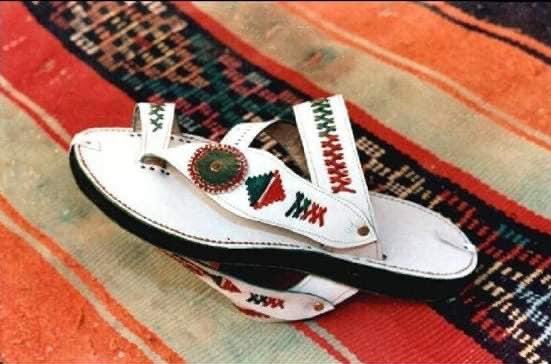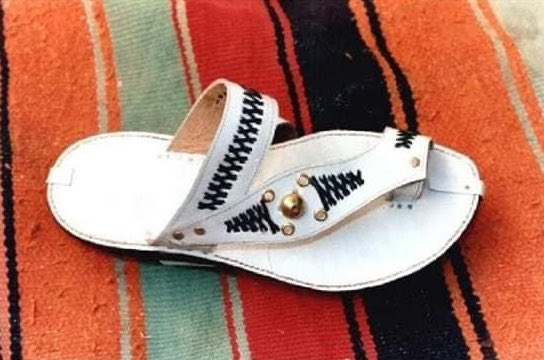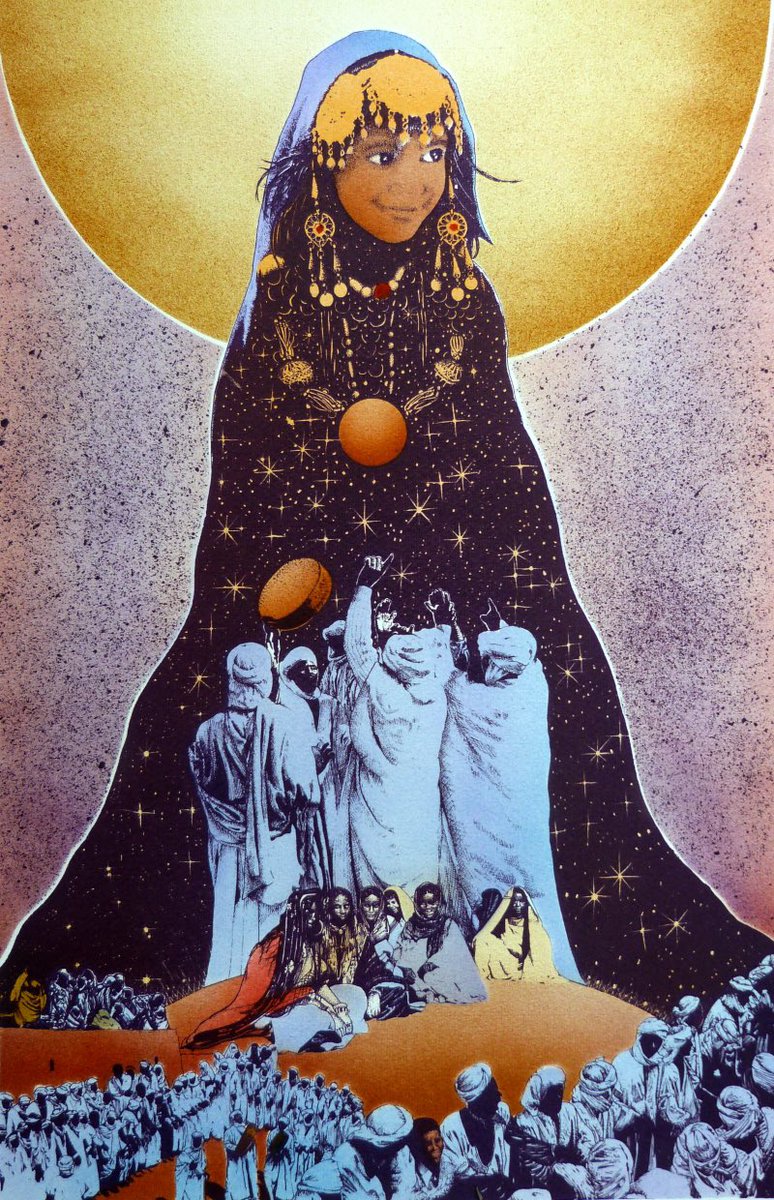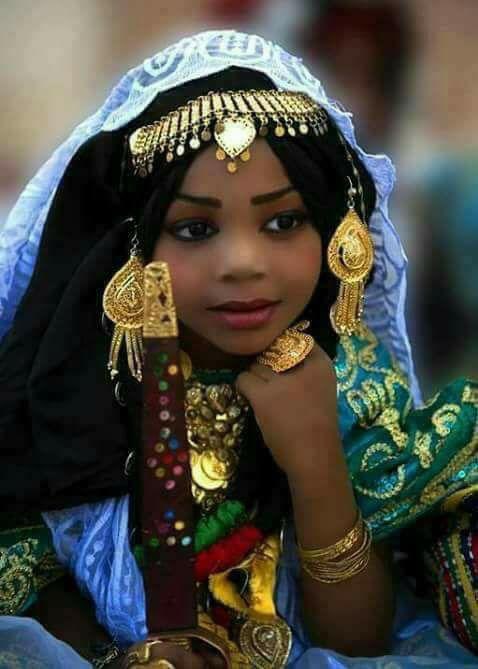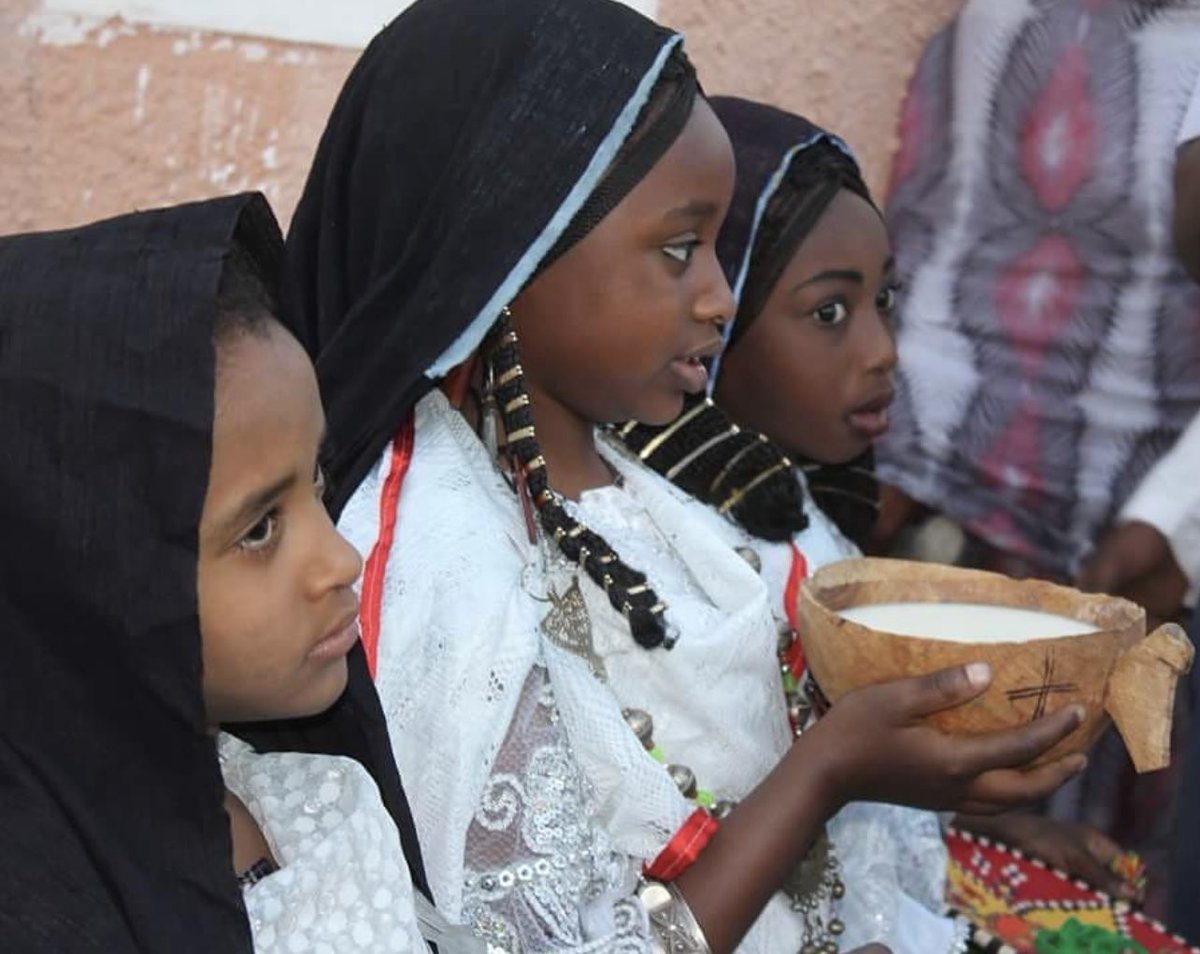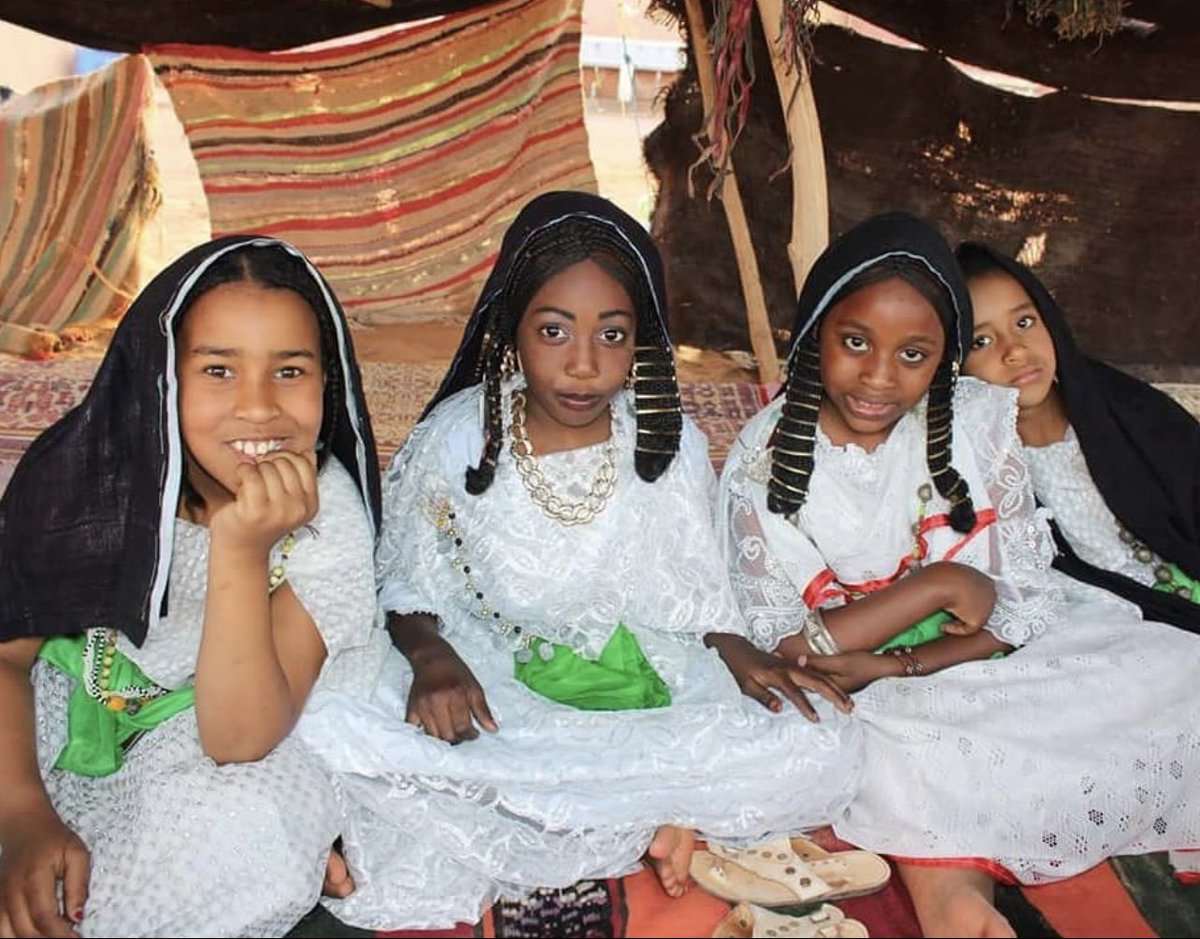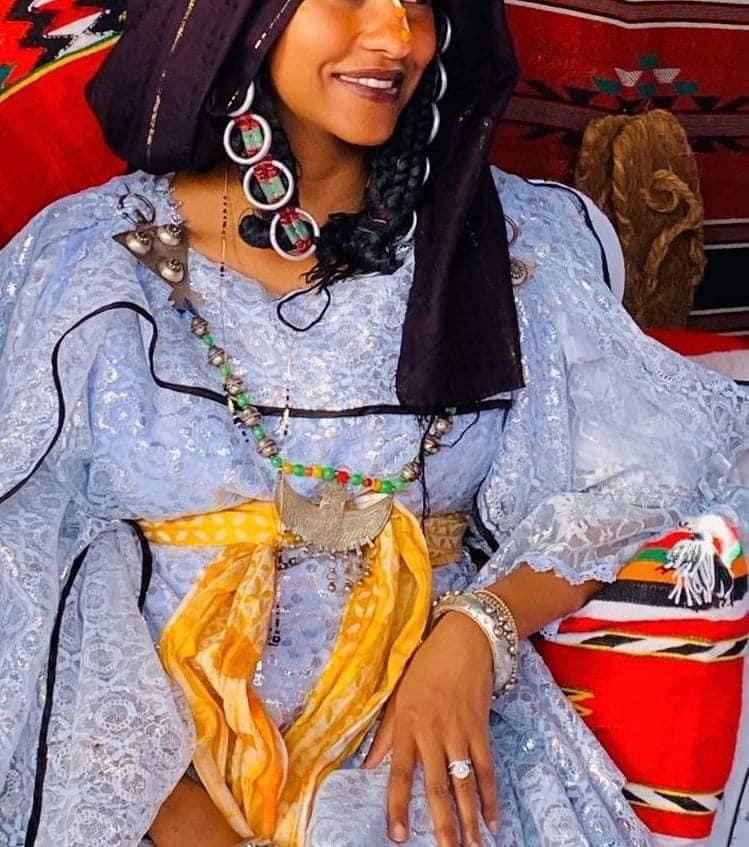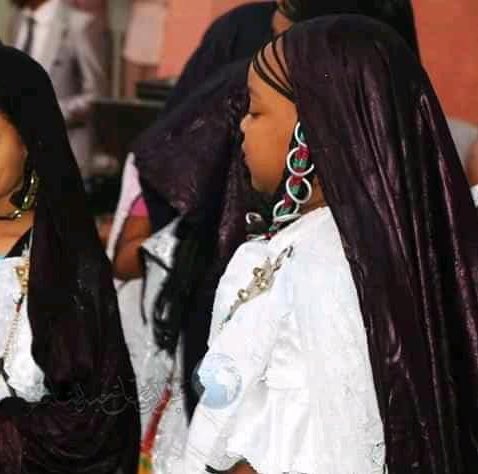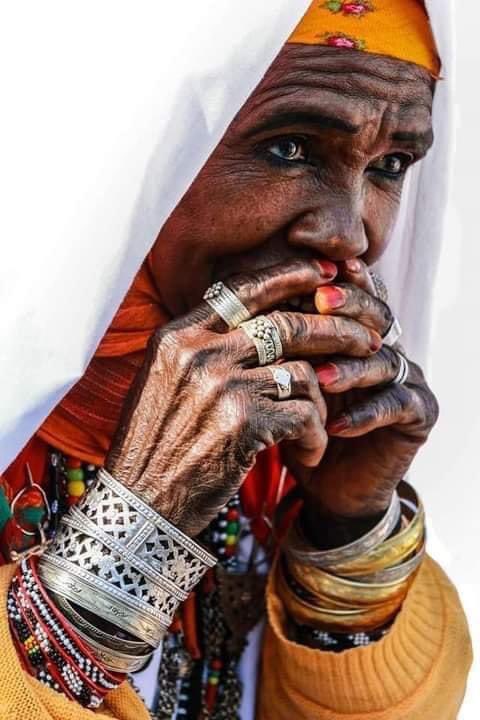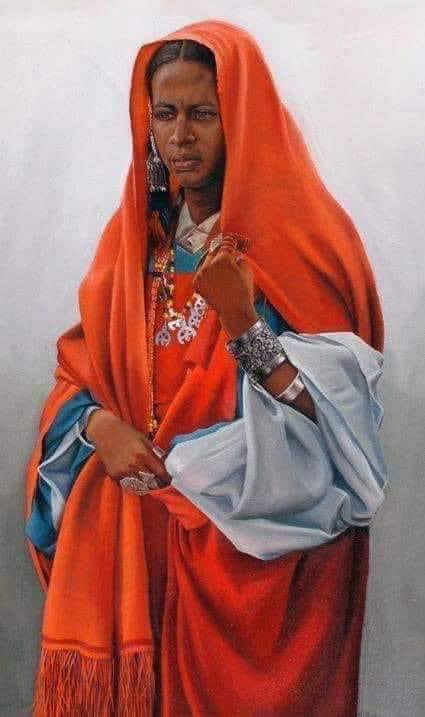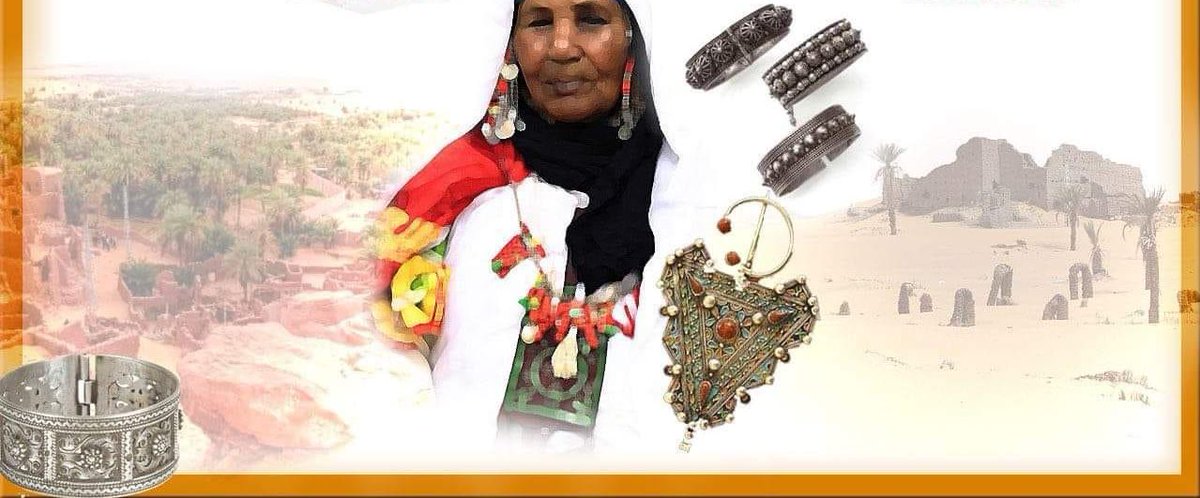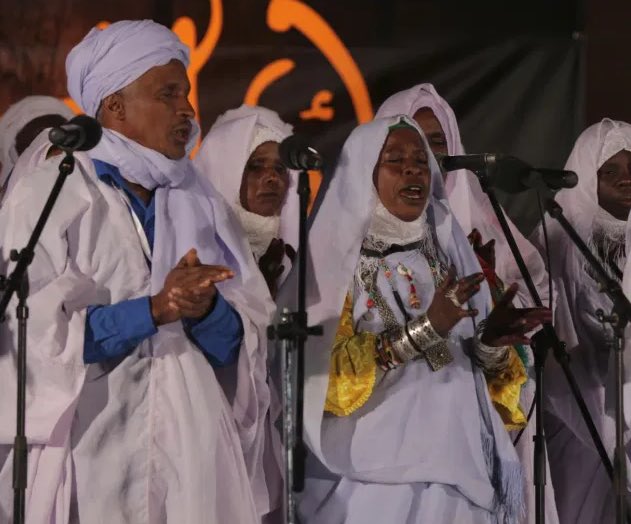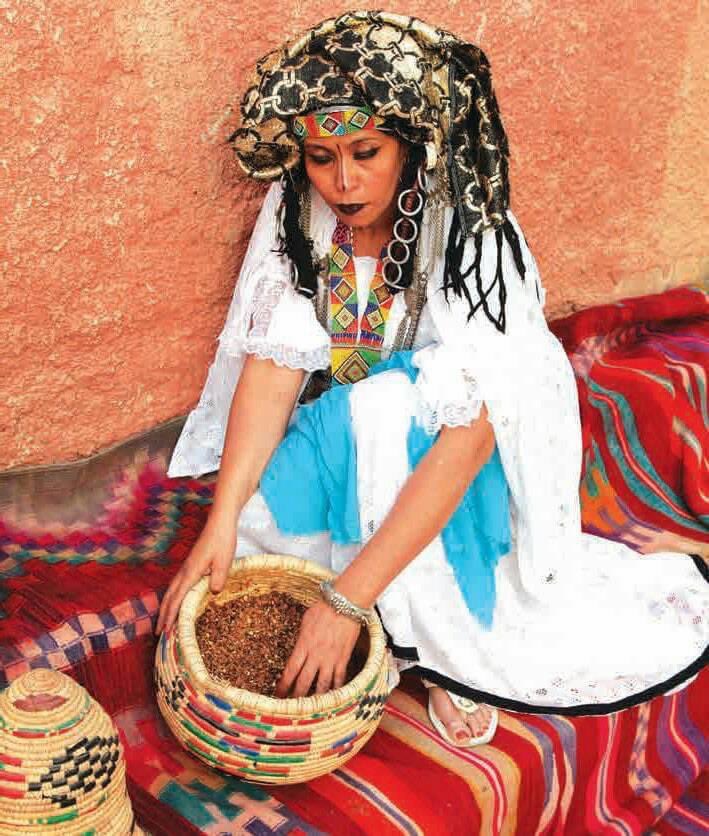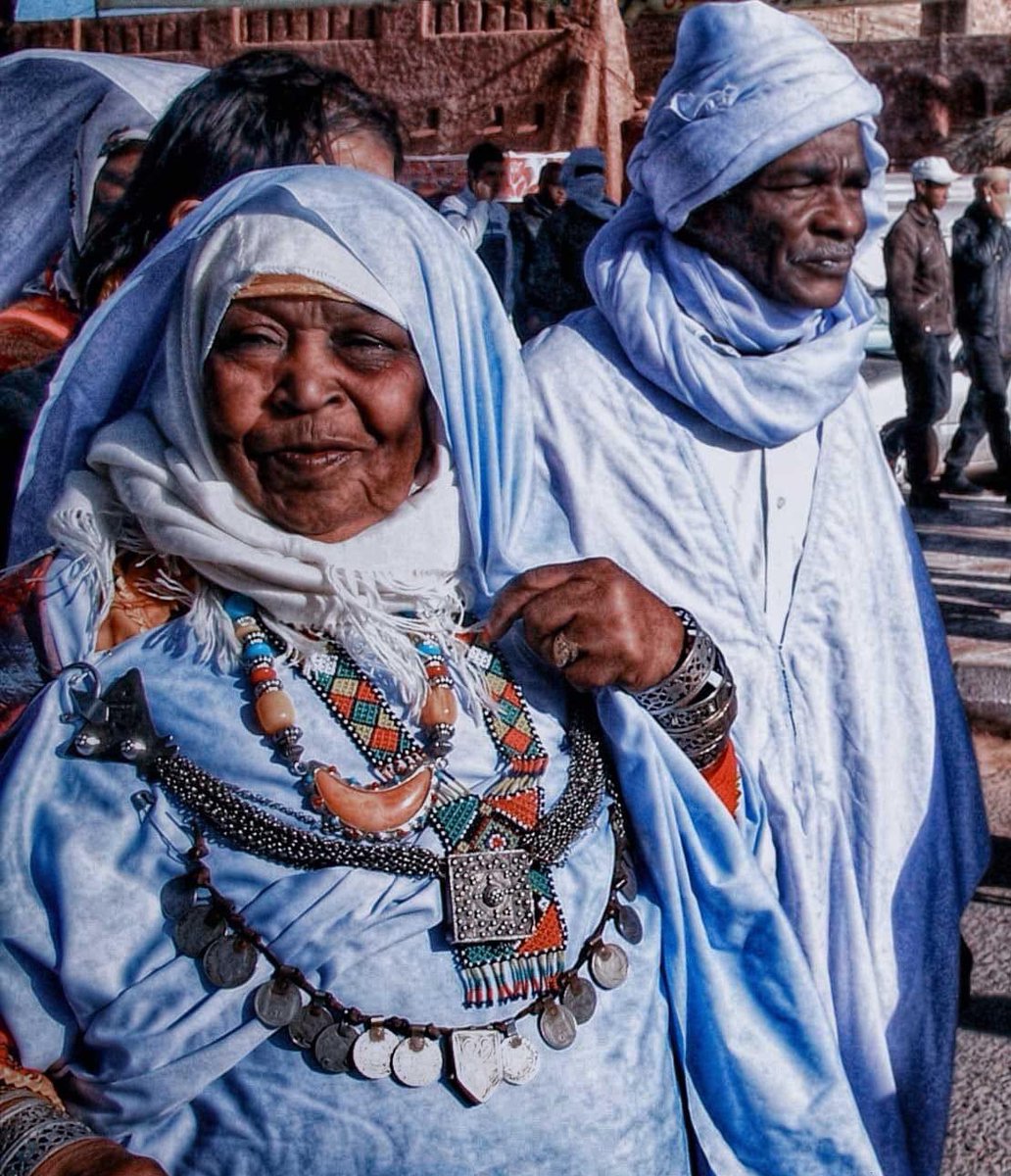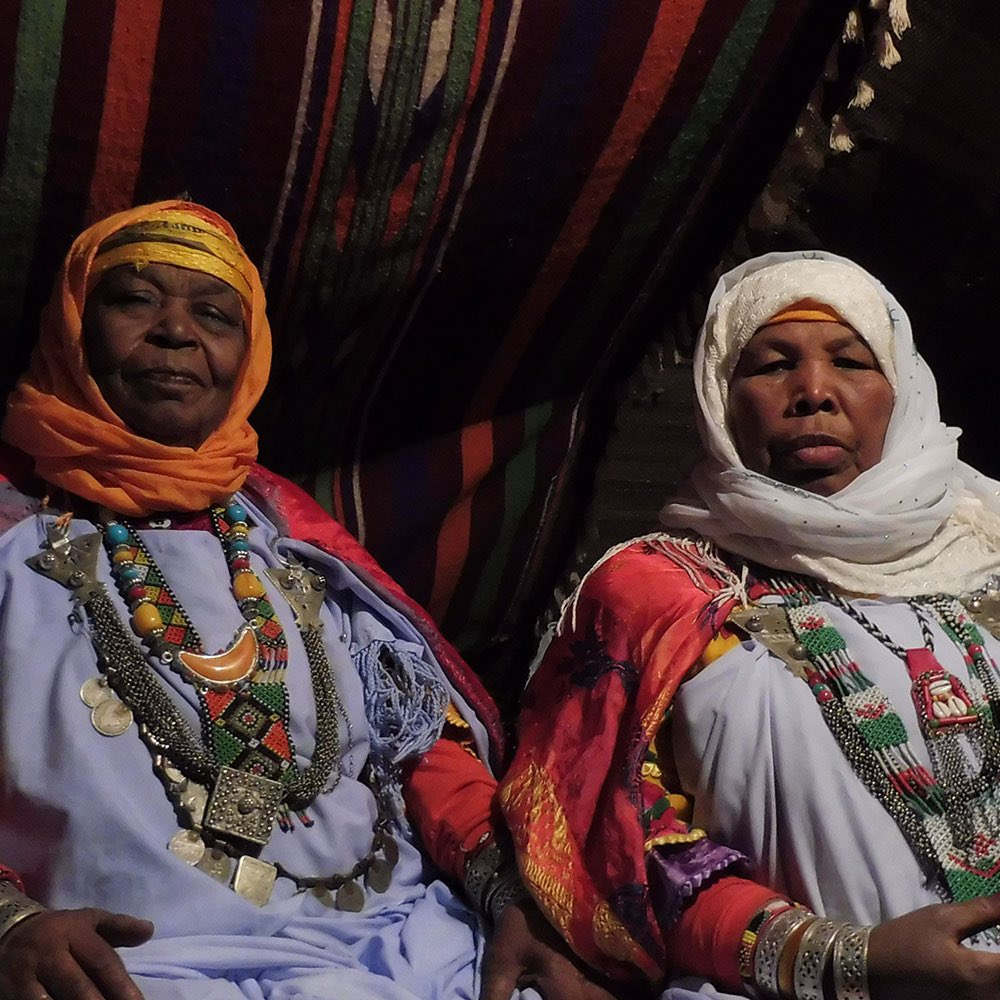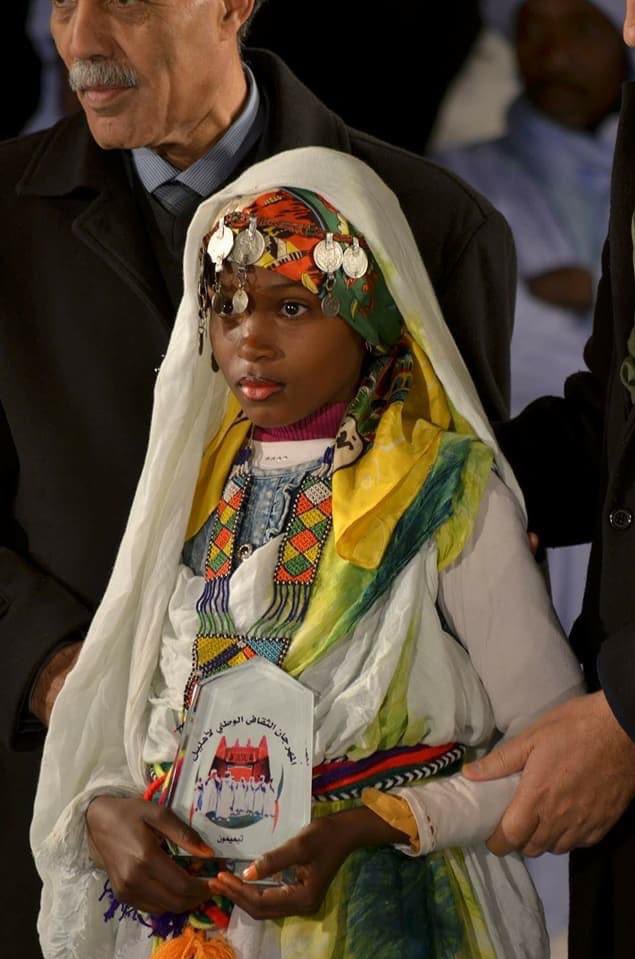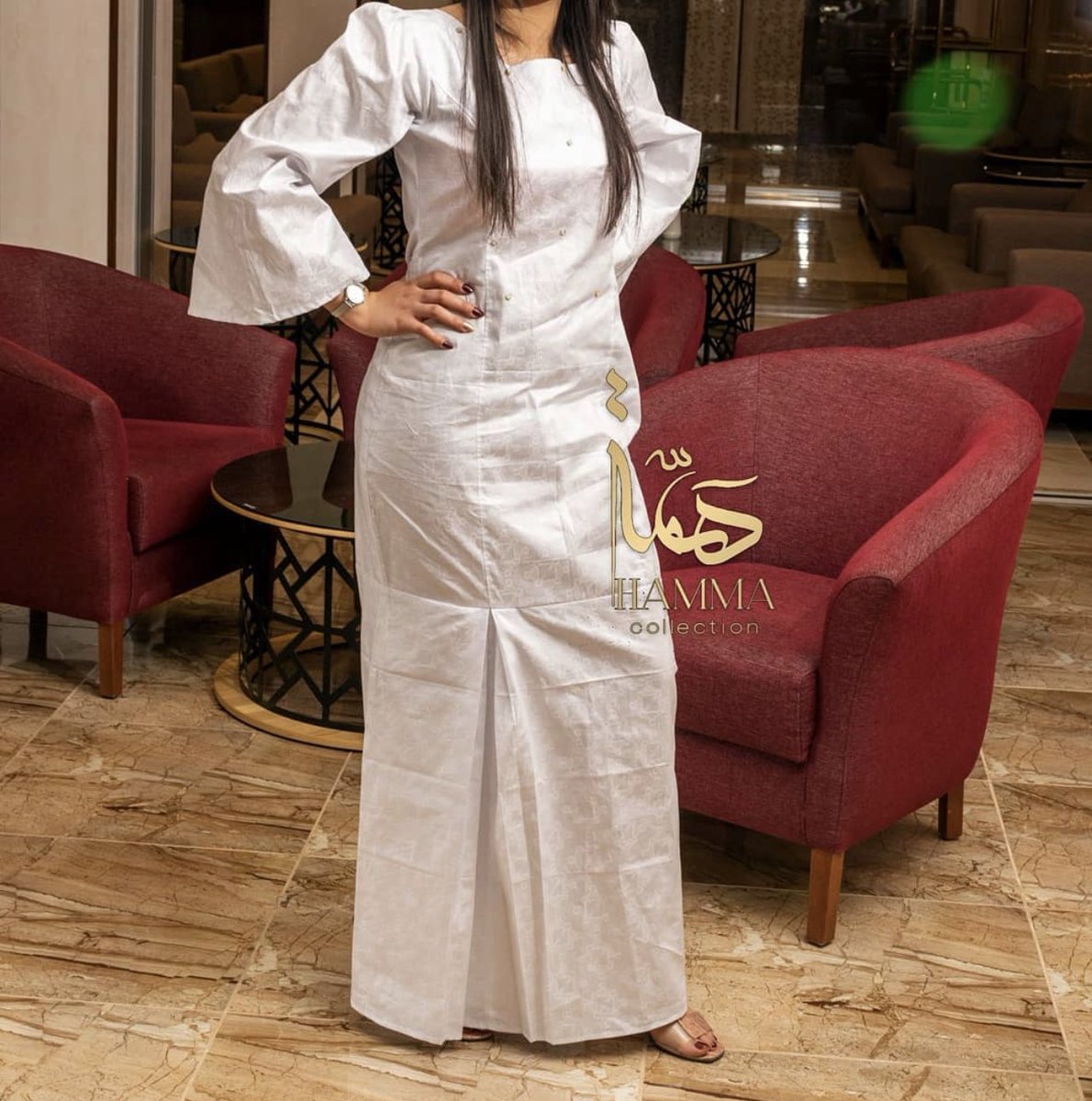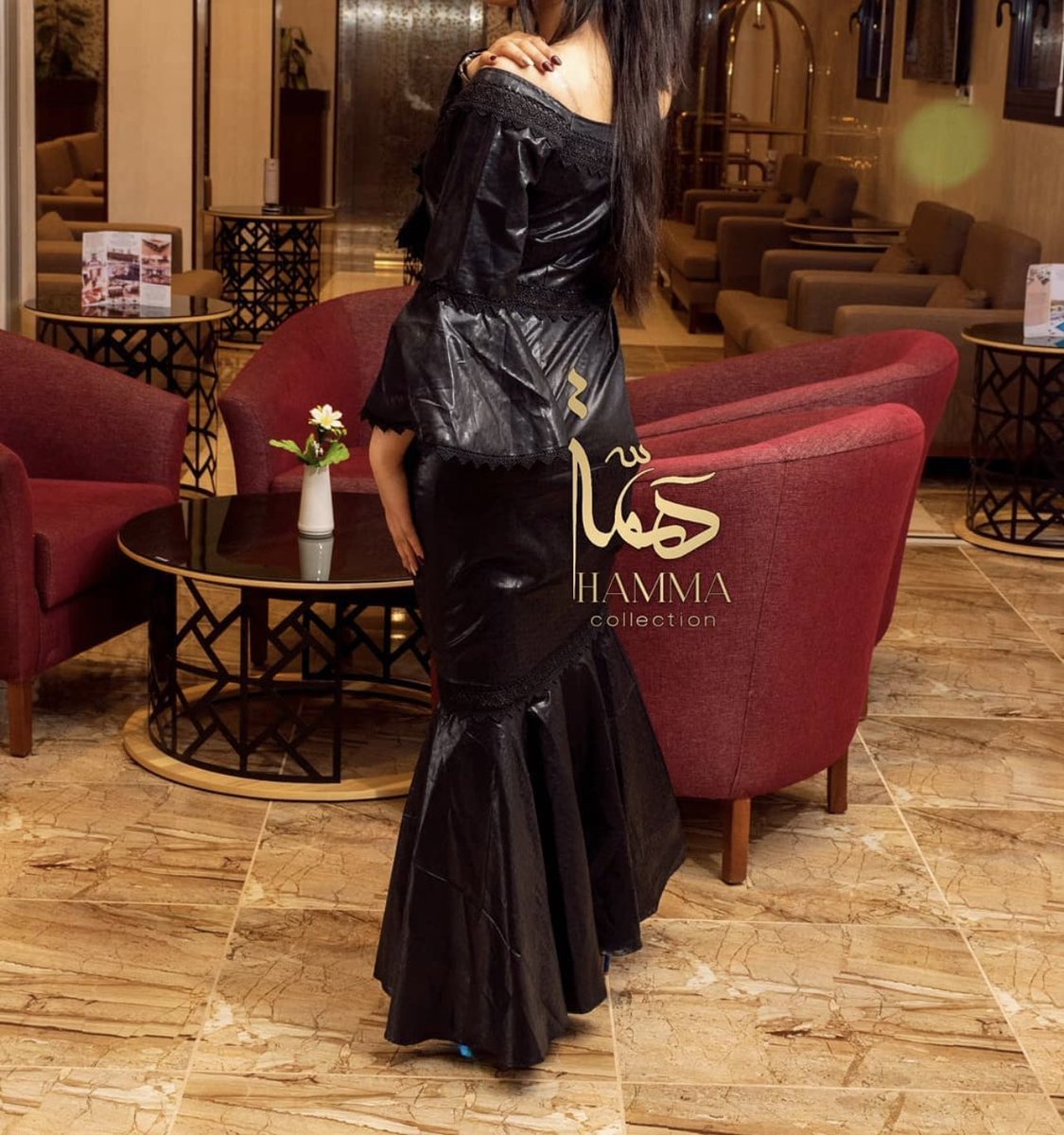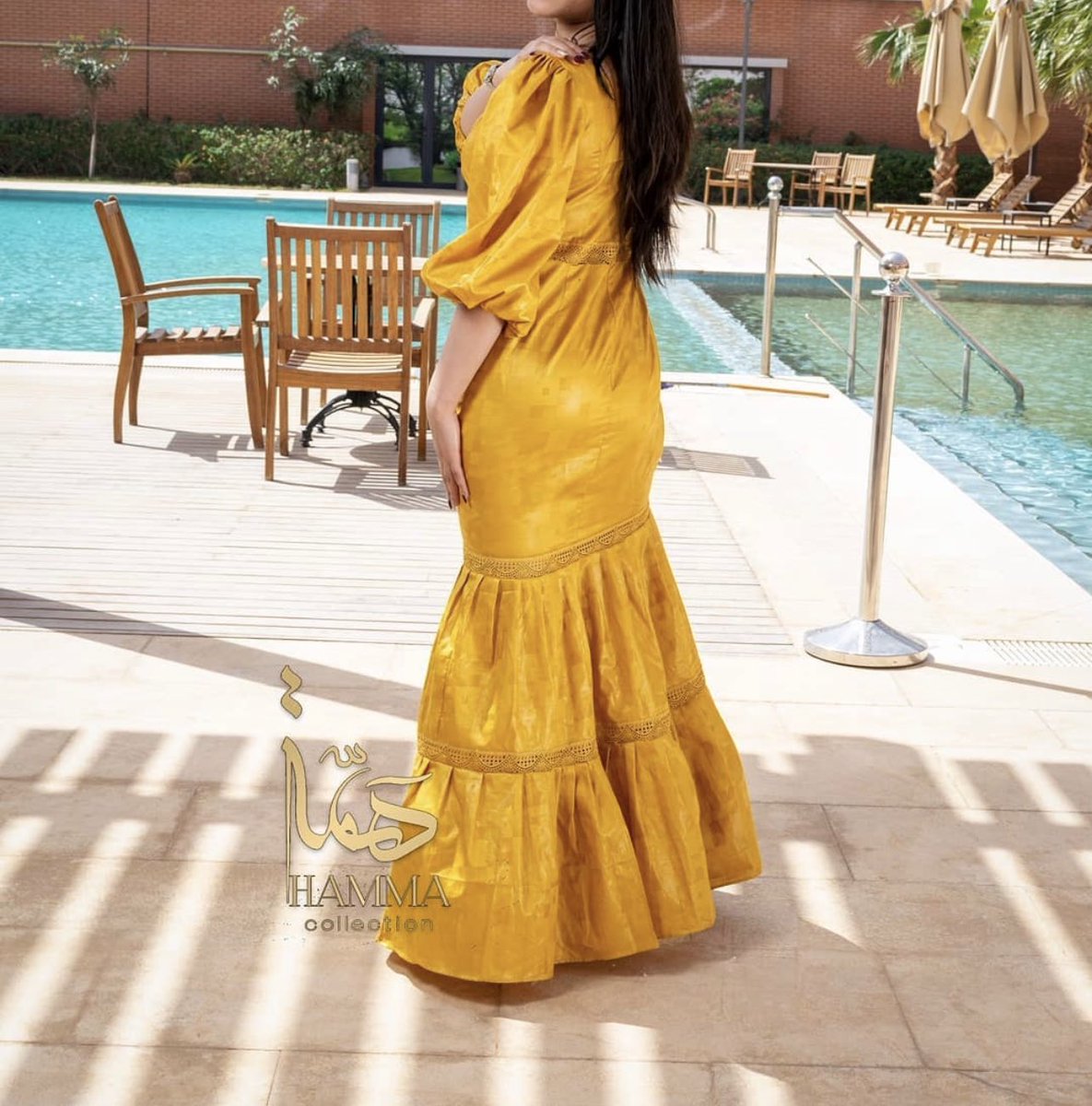Traditional #touatia attire.
In the Tuat (Adrar, Gurara, Timimun), there are several outfits, like the white jawali (الجوالي) specific to Tidikelt.
In the Tuat (Adrar, Gurara, Timimun), there are several outfits, like the white jawali (الجوالي) specific to Tidikelt.
Amira from Aoulef started a clothing brand named after the jawali because of how it symbolizes where she comes from in Algeria
Like Amira mentioned traditional makeup consists of saffron dots on the nose and forehead. The Tuat also has its own dlala, evidently different from that of Annaba’s. This shimmery headpiece is how it takes shape in the region, worn with either a white or light blue jawali.
An overview
This dress is traditionally called roba el jamma (روبة الجمة) which specifically refers to the under-piece. In Aoulef, the belt around the waist is yellow/orange whereas in Tidikelt/In Salah it is in lime green.
Like in Tuareg regions, in the Tuat there is a wallet pouch that hangs around the neck as well as a key padlock (الساروت) flung over the back.
The following are worn to go out: 3baya el shatamil (عباية الشتاميل), mle7fa, and jellabas. The Tuat area is also probably as south as it gets where the 7ayek exists.
The ghubariya (الغبارية) is worn by very young women and is a short dress with frills at the bottom.
There are several kinds of pants women wear and for different purposes: serwal el sfayef (سروال السفايف), serwal el 3mara (سروال العمارة), serwal el teka (سروال التكة), serwal el shamal (سروال الشمال), and serwal 3adi (سروال عادي).
Serwal el 3mara is sewn with colorful threads. Serwal 3adi is self explanatory - it’s worn at home to chill.
In Timimun/Gurara women wear the mele7fa instead of the jawali, and it is only fitting that a place nicknamed “Red Oasis” for its red architecture has a mele7fa to match - making the Mzab not the only region to use this dye for its clothing traditions.
There is another mele7fa a bit different in that it is white or light blue and the inner sleeves and scarf are usually in pink/red/orange. The mle7fa in both places are distinguished from the jawali by having no belt. This one is especially popular for ahellil.
Kambush el wad (كمبوش الواد) is a head accessory made of spun wool imported by merchants.
The 7aram (الحرام) is linen made from indigo (which I talked about in my Tuareg & Bidhan threads) and goes on the head while wearing the jawali.
Hand-embroidered shoes for brides adorned with strings of silk for brides are called tidalikiya (التيدليكية).
Sabat el ri7iya (صباط الريحية) are shoes made of cattle skin that were worn back then (not just in the Tuat region - and today are of refined quality in urban cities). Ta3il el shirk (نعايل الشرك) or sabat el shirk (صباط الشرك) are shoes made of leather worn casually.
Now time for the traditional jewelry. El biyadh (البياض) is placed on the head under a wrap called el 3arga (العرڤة) which lays on the izar. El kharas or el mnagish (الخراس أو المناڤيش) are silver or onyx ‘earrings’ attached to the 7aram.
There are rings that represent different localities, like the “drum” or “dome” rings (خاتم الطبل والقبة). A distinguished ring called ma7bas (المحبس) is made of silver/copper. Bracelets are made of pure silver & Tuatiyas stack them - just as long as they’re an odd number in total
Silver chains decorate the chest.
Anklets called khelkhal el brim and el dwadi (خلخال البريم والدوادي) in the Tuat prove this accessory’s important place in Algerian heritage. But not everything is silver: the gold lwiza (اللويزة) around the neck signifies a woman is married.
Anklets called khelkhal el brim and el dwadi (خلخال البريم والدوادي) in the Tuat prove this accessory’s important place in Algerian heritage. But not everything is silver: the gold lwiza (اللويزة) around the neck signifies a woman is married.
Accessories that are colorful (like the sash/forehead band here) are said to be indicative of what was imported from sub-Saharan cultures (the case for Algeria in general) when Black populations became a part of North African society

 Read on Twitter
Read on Twitter